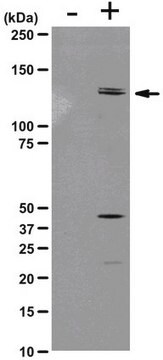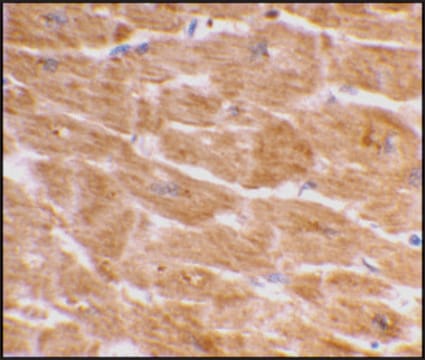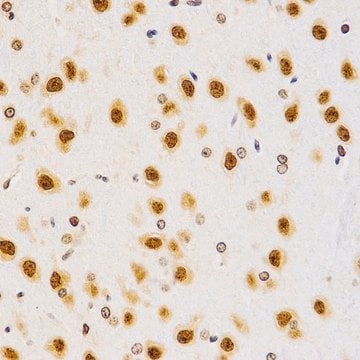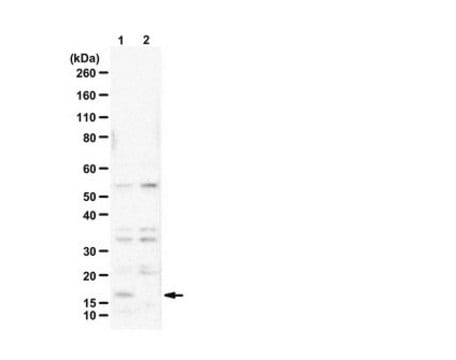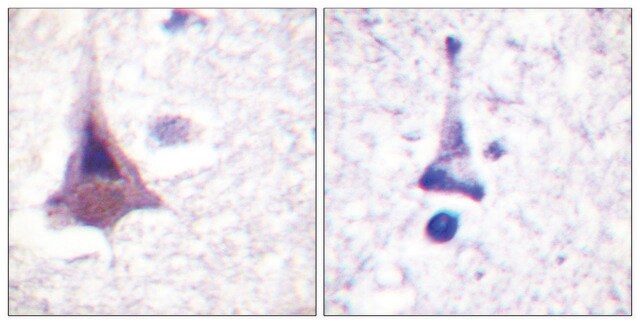ABE2909
Anti-phospho Histone H4 (Tyr51)
from rabbit
Synonym(s):
H4, H4Y51, H4pY51
About This Item
Recommended Products
biological source
rabbit
Quality Level
antibody form
affinity isolated antibody
antibody product type
primary antibodies
clone
polyclonal
species reactivity
human
packaging
antibody small pack of 25 μL
technique(s)
immunocytochemistry: suitable
immunofluorescence: suitable
western blot: suitable
isotype
IgG
NCBI accession no.
UniProt accession no.
shipped in
ambient
target post-translational modification
phosphorylation (pTyr51)
Gene Information
human ... HIST2H4B(554313)
Related Categories
General description
Specificity
Immunogen
Application
Epigenetics & Nuclear Function
Immunofluorescence Analysis: A representative lot detected phospho Histone H4 (Tyr51) in HEK293 Tie2 cells treated with Angiopoietin 1 (ANG1) and ionizing radiation (Hossain, MB., et al. (2016). Sci. Adv. 2; e1501290).
Quality
Immunocytochemistry Analysis: A 1:250 dilution of this antibody detected phospho Histone H4 (Tyr51) in HEK293 Tie2-myc cells treated with Angiopoietin 1 (ANG1).
Target description
Physical form
Storage and Stability
Handling Recommendations: Upon receipt and prior to removing the cap, centrifuge the vial and gently mix the solution. Aliquot into microcentrifuge tubes and store at -20°C. Avoid repeated freeze/thaw cycles, which may damage IgG and affect product performance.
Other Notes
Disclaimer
Not finding the right product?
Try our Product Selector Tool.
Storage Class
12 - Non Combustible Liquids
wgk_germany
WGK 2
flash_point_f
does not flash
flash_point_c
does not flash
Certificates of Analysis (COA)
Search for Certificates of Analysis (COA) by entering the products Lot/Batch Number. Lot and Batch Numbers can be found on a product’s label following the words ‘Lot’ or ‘Batch’.
Already Own This Product?
Find documentation for the products that you have recently purchased in the Document Library.
Our team of scientists has experience in all areas of research including Life Science, Material Science, Chemical Synthesis, Chromatography, Analytical and many others.
Contact Technical Service